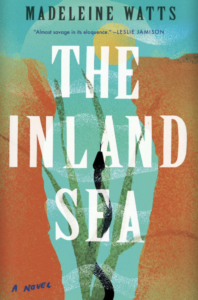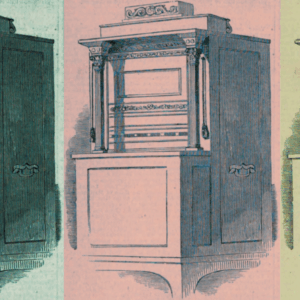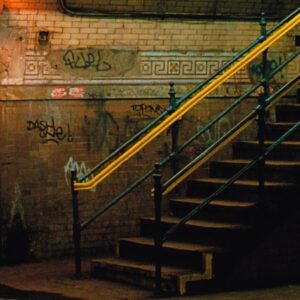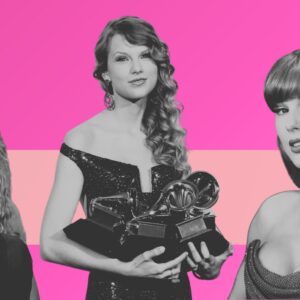
The Long Goodbye: Reconciling with the End of Nature
Madeleine Watts on Life in a Slow Motion Crisis
In my first year of school, we grew trees. We were taken into the playground and taught how to press our seedlings into the soil, to pat the new plants in their plastic containers, very gently, against the ground. We watered them, stuck masking tape along the sides and scribbled our names in black marker. It was the first time I had ever nurtured something, and I wouldn’t do it again until adulthood.
This was 1995. There was a hole in the ozone layer, the waters were polluted, there was trash where there should not have been trash, and there were not enough trees. We were told that day, in the way one explains things to five- and six-year-olds, that there was too much carbon dioxide in the air, that trees could absorb the CO2 and replace it with the oxygen they expelled, and that was why we needed to plant more trees. It was a period of relative calm between geopolitical storms. The Cold War was over, Francis Fukuyama had declared History was at an End, and it was, quietly, the year the Intergovernmental Panel on Climate Change first definitively concluded that there was “a discernible human influence” on the changing climate. But in kindergarten, we were assured that the problem could be solved with just a little will-power, just a little ingenuity. Nothing to worry about.
The seedlings were placed in a makeshift green house on the edge of the playground. We checked in on the trees throughout the school year, watering, fertilizing, watching the first shoots begin to creep out of the soil and rise up. At the end of the year the plants were taken somewhere else, a place where they could turn into great, full-leafed trees that would absorb all that carbon dioxide. When we returned to school after the summer the green house was gone, and a series of sand pits had been constructed where it had stood. We played in the sand pits and we were kind to the trees and we were careful not to litter, but the environment only got worse.
*
I was an only child, and alone a lot of the time. I was not interested in the outdoors at all, disliking being dirty or sweaty or sunburned. But I liked gardens, particularly my grandmother’s. It was at her house I spent most afternoons after school. I talked to her pansies, I hid in the mulberry bush, and I sat reading in the Moreton Bay chestnut tree in the front yard until it got dark. I paid attention to the way the plants grew and asked annoying questions of my grandmother, like why couldn’t I pick the oleander flowers, and why was it that the apple core I planted down the side of the house never grew into an apple tree. There was something grounding and consoling about the garden.
Australian summers are hot, and when I was that age my grandmother would turn on the sprinkler in the backyard. I would put on my bathing suit and run back and forth through the water until I was soaked and cool. My first understanding that something else was wrong with the environment was when the sprinkler was taken away. The drought on the east coast of Australia that began that year was the worst since European colonization. As it went on, the nightly news hosted segments on the worsening situation inland: the abandoned farms, the cracked riverbeds, the bare white bones of a cow’s rib cage desiccating on grassless plains. To grow up in Sydney during the first decade of the millennium was to always be aware of the lowering water level at Warragamba Dam.
As it went on, the nightly news hosted segments on the worsening situation inland: the abandoned farms, the cracked riverbeds, the bare white bones of a cow’s rib cage desiccating on grassless plains.
The drought was “unprecedented.” It was “extreme.” It was “catastrophic.” The drought was exacerbated by record-breaking heatwaves in the hottest year on record, which soon became the second-hottest year on record, or the third. All the records were record-breaking. You grew to feel you were living in extraordinary times. As the drought progressed, the cities of the Australian east coast were placed under water restrictions. The sprinkler was packed away and eventually donated to the council clean-up. We could water the garden two times weekly and no more. We took shorter showers. Violent fights were reported on the news, fights concerning the irresponsible washing of cars or the illegal hosing of a driveway. The drought began when I was six, and ended when I was twenty. To this day, I become viscerally upset at the sight of somebody hosing down cement, no matter where in the world I am.
The drought also brought fires. The fires were, on one level, a routine fact of living in Australia. Like the American west and much of the Mediterranean, Australian ecology relies on fire to regenerate. The loss of Indigenous stewardship and poor land management since the invasion of the continent had made the fires more frequent and more widespread. But that did not account for all of it. It seemed, every year, as though the weather was a little worse, a little more often. The trees we grew in kindergarten were not doing the trick. As I got older, droughts and fires formed a background hum, like the refrigerator in the kitchen that you only notice getting louder when the engine starts to fail.
When I was a teenager my stepfather began going to the supermarket and coming back with plastic drums of water. He kept them in the laundry room off the veranda, and then when they got too numerous, he kept them in the fibro garden shed. The drums were to make sure we were prepared for when the water ran out at Warragamba Dam. He was convinced this was an inevitability. My stepfather also predicted that the warming oceans would soon send the crocodiles and irukandji jellyfish that lived in the northern part of the country south to our temperate beaches. He warned as well about heavy metals in the flesh of the Sydney Harbour fish my mother brought home from the seafood markets. He was right about the fish—eating seafood caught in the Harbour was banned when I was fifteen. Irukandji jellyfish move further southwards every year. And so what else was my stepfather right about?
We are taught as children to think of emergencies as big, obvious, and all-at-once. This is why anxieties about climate change are most frequently expressed in disaster films and sci-fi futurist novels where the city is already flooded, the resources already run out. As though only a cataclysm makes it real. As though it were inconceivable that the emergency could be so slow, so prosaic, so dull. The things that were actually part of my day-to-day life as a teenager felt satisfyingly tangible and concrete. The fleshy reality of bodies, of my body, going about its business of ironing pleats into school pinafore, making coffee, trudging to the train station, none of that seemed like it had anything much to do with ocean levels and permafrost and species extinctions.
But sometimes I would be overcome by a fear so overpowering I would find myself struggling for breath. And sometimes in those moments of fear, which caught me most often when I couldn’t sleep, I felt the reach of my body beyond the physical container of its flesh. The electricity powering the bedside lamp I read by was connected to a plant sending smoke into the sky, the milk I poured into my coffee was connected to industrial-scale cattle farming, pumping out methane into the air, the water I showered in was another couple of micro-millimeters taken out of Warragamba Dam.
*
I moved to New York in my early twenties, and my first winter in the city was that of a polar vortex. I had never lived with snow before and never been so cold. I did not know the right shoes to wear, I did not know to wear mittens instead of gloves, I didn’t know that without a humidifier both you and everything you own dries out. The polar vortex was unprecedented, just as unprecedented as the weather conditions I’d become accustomed to on the other side of the globe. Record-low temperatures lasted well into the spring. In Central Park one morning it was colder than any other day since 1896. It was suggested that the polar vortex had come about due to the rapid melting of Arctic sea ice, causing the Atlantic jet stream to weaken and become more variable, taking warm air north and sending cold air south. But at my gym, the televisions in the changing rooms gave voice to Republicans who cited the freezing temperatures and piles of snow as evidence that climate change wasn’t real, or else why would it be so cold. Because wasn’t global warming meant to be warm?
We are taught as children to think of emergencies as big, obvious, and all-at-once, as though it were inconceivable that they could be so slow, so prosaic, so dull.
After two winters of polar vortex, the winter of 2015 was different. On Christmas Eve morning, my boyfriend and I went running in McGolrick Park. It was warm enough for us to run without sweatshirts. The temperature rose to 70 degrees. By the afternoon I noticed that the cherry blossom trees had begun to flower. They were four months early.
It was after that Christmas that I began to feel like I was missing something about the natural world. Was I sure that I knew when cherry blossoms flowered? And the shrubs that were budding beside the cherry blossoms, what were they called? I did not know anything about the environment I was living in, and it was changing irrevocably all around me.
That was around the time that my boyfriend brought home a ZZ plant and a snake plant, purchased specifically because they required so little light. He lived in a studio on the Upper West Side facing the back of another apartment building that completely stifled the light in the winter. You had to lie down by the window and look upwards to see the sky. I loved the sheer Manhattan-ness of the apartment at first, and then I hated it. I blossomed on the trips we made to Arizona and California, where my boyfriend’s mother taught me about arid plants and warned me to watch out for the chuckwallas that lived in the garden furniture, where the sky was unbelievably high, where I could throw myself into the Pacific or take off walking into the Sonora desert.
I adopted the plants he had bought when we moved in together and got married. For the first time since the seedling in kindergarten, I grew things. The ZZ plant grew enormous the more I paid attention to it. That I could affect the state of something’s growth by paying attention to it felt like a lesson that was both radical and obvious. I began to collect books on houseplants, and attended workshops on soil chemistry and propagation. I learned the names of things. I downloaded plant identification apps to my phone, and purchased several field guides. I wandered around the Phoenix neighborhood my husband had been raised in, taking photographs of cacti and succulents and mostly failing to get the algorithm to tell me what they were. I had a guide to wild urban plants of the northeast, and after reading it, I began falling into raptures about the weeds growing in pavement cracks and along barbed wire fences when I walked around my neighborhood. The presence of any plants at all in a city with such polluted soil was a small miracle by my new reckoning.
In the mornings I read the news in The Guardian and the New York Times. I saved articles, and they were all the same sort of thing. For a while, I didn’t know why I was collecting them, until they began bleeding into the book I was writing. The Bellinger river snapping turtle, all but wiped out by a mystery disease. An iceberg twice the size of Luxembourg breaking off the Antarctic ice shelf. Hundreds of British wildflower species found blooming in midwinter. Vanishing Joshua trees. Orca apocalypse. The River Jordan a stagnant stream. Heat, flood, and fire records toppled at a rate that became, frankly, banal.
This was writing which, at its best, used nature as en ethic: to measure harm, to study dependency, to listen to the human echo in the woodlands and oceans and deserts and think about a landscape’s history, and its future.
The Manhattan bookstore where I worked had a nature section, and when the section manager moved to Kentucky I asked if I could take it over. I began reading the Nature canon: Edward Abbey, Terry Tempest Williams, Rachel Carson, John Muir. Nature writing has sometimes been a vehicle for libertarianism, fascism, and nationalism, drawing on reductive metaphors about land and people. But there was, in those years, a proliferation of books dubbed the “new nature writing,” by writers like Jessica J. Lee, Philip Hoare, and Helen Macdonald. These authors didn’t focus on encounters with the exotic and rare so much as they attempted to depict unremarkable encounters with the natural world. This was writing which, at its best, used nature as en ethic: to measure harm, to study dependency, to listen to the human echo in the woodlands and oceans and deserts and think about a landscape’s history, and its future. The more I read the books in the nature section of the bookstore, the more I felt that the emergency was everywhere, already. I did not think my individual actions would amount to very much, because we, all of us, are already woven into the web we have built ourselves. Paying attention to the weeds and my houseplants took on an emotional urgency.
*
In 19th-century America the resounding symbols of what made nature meaningful were imposing mountain peaks and towering redwoods. It was John Muir riding the storm and Thoreau preaching self-sufficiency at Walden Pond. In the early 21st century, it was the mushroom that became the key metaphor. Fungal systems were like brains, or maybe like nervous systems. Intertwined, unexpected, difficult to generalize, mushrooms were theorized as queer, diverse, elusive of borders, arising out of ruined places. The theory of the mushroom was a way of conceptualizing and adjusting to condition of economic, social, and ecological precarity. The metaphor of the mushroom allowed us to embrace the ruin of the world. I was skeptical of the metaphor, and the way it could be used as a justification for giving in. But I nevertheless found it compelling.
These metaphors are not wrong-headed or meaningless, neither the redwood nor the mushroom. In his book, After Nature, Jedediah Purdy writes, “Imagination also enables us to do things together politically: a new way of seeing the world can be a way of valuing it—a map of things worth saving, or of a future worth creating.” In other words, finding beauty and meaning in ordinary things might be a way not of surrendering to the ruin of the world, but might form the beginnings of a collective imaginative shift.
Where I lived, in Greenpoint, we couldn’t grow gardens without bringing in new soil. There had been chemical spills all the way through the 20th century, making the Greenpoint soil toxic. By the Newtown Creek, the site of the chemical spill, there was a “nature walk,” and I began to go there all the time. A concrete walkway led down to a stretch of cement along which you could sit and observe the most polluted waterway in New York. A crane on a barge across the water crushed cars into balls like scrunched tissue paper. A wastewater treatment plant loomed to the east. The water was filled with soda bottles and candy wrappers, and occasionally several small fish that survived despite the toxic black mayonnaise choking the bed of the creek. It became the place I would go to read or to think, surrounded by concrete, with Manhattan towering like a wall of steel to the left. I liked to make jokes about the Newtown Creek Nature Walk to my friends, saying that it was the most involved with nature that I got in the city.
But I also loved it. Every time I went there I was forced to think about nature not as some place out in the woods, but here, in the middle of one of New York’s most polluted places. “Losing nature need not mean engaging it differently,” writes Purdy. “It may mean treasuring places that are irremediably damaged, learning to prize what is neither pure nor natural, but just is—the always imperfect joint product of human powers and the natural world.”
*
I bought more plants. In the space of a year, four new plant stores opened up in my neighborhood. Where once there had been music venues and dive bars, now there were monsteras. Newspapers postulated that the proliferation of houseplants among people in their twenties and thirties served to fill “the void in their hearts.” Soon, a plant store opened on my street. After rent and food and bills my wages went to buying books and plants. I embodied all the estimations of the opinion columnists; I was just another Millennial who wasn’t saving. One afternoon I walked home, hugging a four-foot tall money tree plant, my face plunged into the leaves, embracing the heavy-handed symbolism.
Fungal systems were like brains, or maybe like nervous systems. Intertwined, unexpected, difficult to generalize, mushrooms were theorized as queer, diverse, elusive of borders, arising out of ruined places.
Not long after the plant store down the street opened, the owner gave an interview to a digital lifestyle platform in which she mused that houseplants were so popular because they were a vessel for pent-up maternal energy. I wasn’t sure about that. The plants did not feel like replacements for children, or pets. They felt like a replacement for nature itself. They were a tiny microcosm of the natural world, not as big or as wild as the Sonora Desert or the Pacific Ocean, not as dire as the Newtown Creek. They were a salve for the five-year-old girl I still carry around inside me.
At home, my plants took up every available window. When the tropical plants needed to be watered I took them to the bathroom and put them in the shower, to replicate rainfall. I brushed down the needles of cacti with a toothbrush. I watched leaves unfurl and tend towards the light, and I watched cacti flower in the summer, and I felt like I was beginning to understand something even as I felt that understanding was coming too late.
When the plants went yellow or withered my failure to nurture them felt overly important. A metaphor for the state of my life, just like the mushroom or the redwood. A pothos my husband bought me for Christmas became sickly and started to collapse, and I grew so upset about it that I took it to be revived by the plant store down the street, as though they were veterinarians. A cactus suddenly collapsed one morning, striped with mould inside and hollowed out. I left it there to whither, then threw it in the trash. “I hated that you did that. When you loved the plants it made me love you more,” my husband would say at the end of our marriage.
*
I let my plants die, it’s true. Now I live in a different apartment, and I have new plants. By the desk are three full pots of lavender brought in from the cold. The south-facing living room is populated by cacti, by an overflowing pothos, a euphorbia which has grown astonishingly tall in the winter light. In the kitchen, in an envelope, are twelve nasturtium seeds picked and gifted to me by a six-year-old girl on the last warm day of the year. It is snowing now, but I will plant the seeds in the spring. In the spring I will grow tomatoes and cucumbers, I will put the lavender in the sun, I will try to grow roses. I will tend to them, and care for them, even though I know I might leave this apartment as well, and that they won’t be able to come with me. Thunderstorms are sweeping the city I was born in, because it’s a flood year, and it’s the rainfall records that are breaking now. The Christmas beetles did not come out for Christmas, I’m told, and nobody knows why. Even though it’s cold here, it doesn’t snow like it used to. The ticks carry Lyme disease and the melting permafrost is full of anthrax. There is no neat happy ending to be found in this story, no arc of redemption. But everything we can possibly love, in all its brokenness and beauty, is here.
__________________________________

The Inland Sea by Madeleine Watts is available now via Catapult.
Madeleine Watts
Madeleine Watts is the author of The Inland Sea, which was shortlisted for the Miles Franklin Literary Award and the UTS Glenda Adams Award for New Writing. Her novella, Afraid of Waking It was awarded the Griffith Review Novella Prize. Her nonfiction has been published extensively in Harper’s Magazine, The Guardian, The Believer, The Paris Review Daily, Literary Hub, and Astra Magazine. She has an MFA in creative writing from Columbia University and teaches at Columbia and Johns Hopkins Universities. Her latest novel, Elegy Southwest, is available now from Simon & Schuster.












